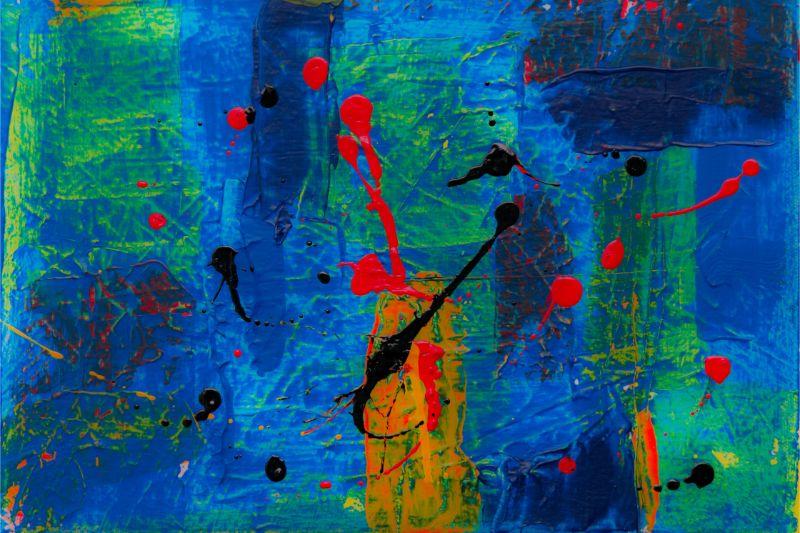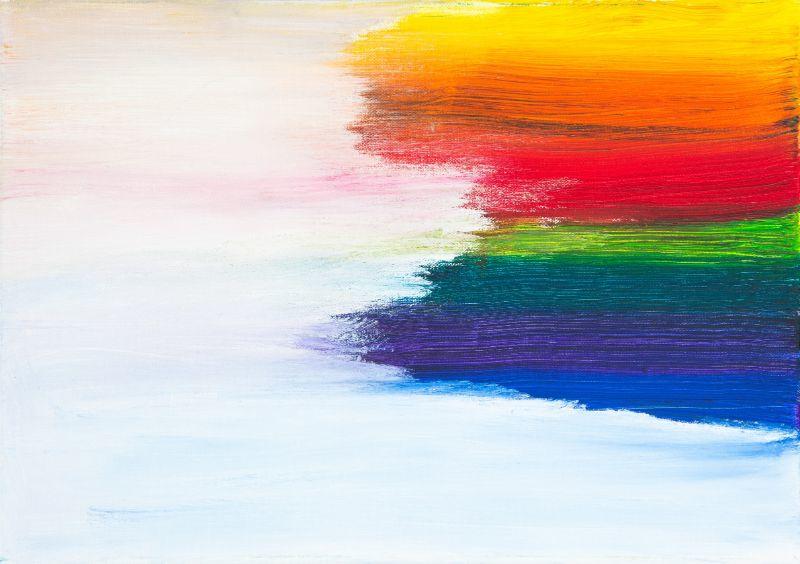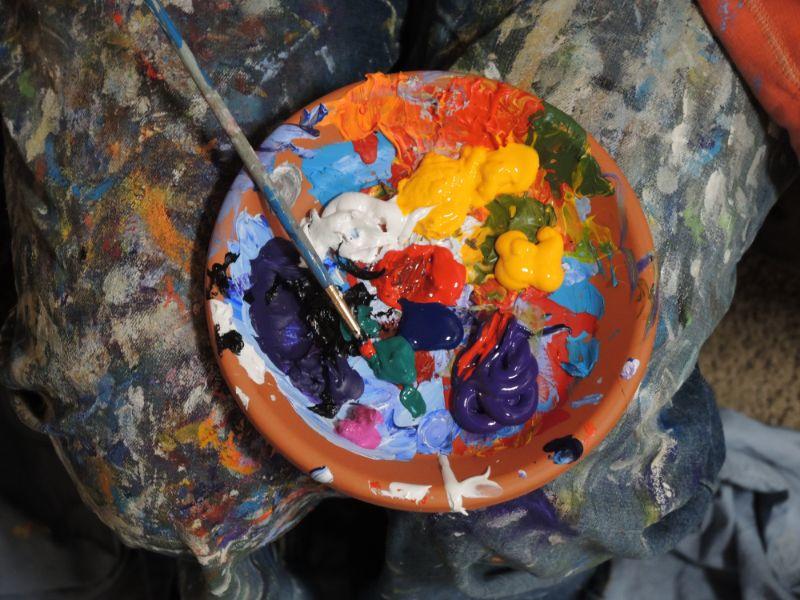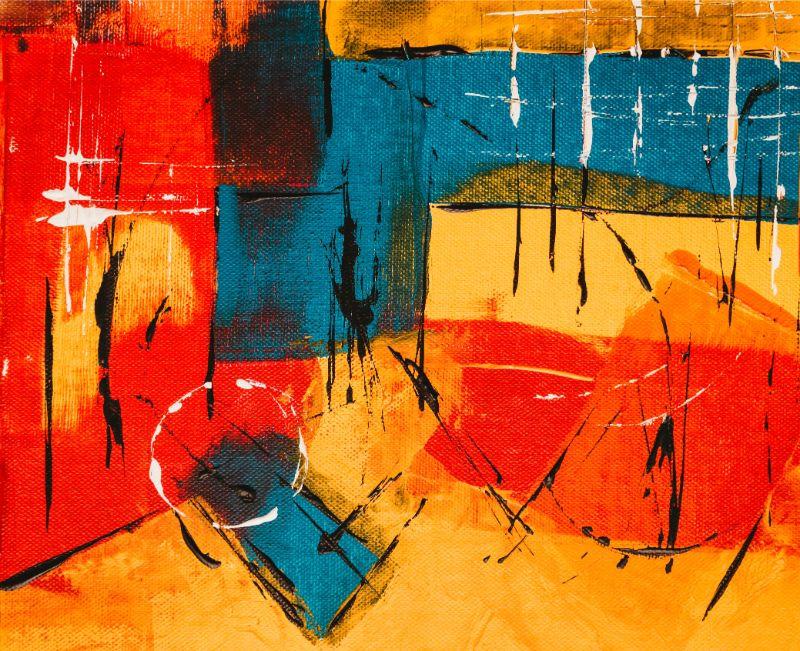A splash of paint here and there, no rules, but the ability to express yourself freely on a canvas. Imagine that! Well, that was the types of paintings produced during the expressionism movement era that was started by a group of expressionist artists.
Expressionists referred to a group of artists who didn't believe in creating art by adhering to any guidelines. Expressionists started their movement called Expressionism round about the late 19th century and the early 20th century. These expressionists sought to express themselves on a blank canvas revealing feelings and emotions using mishappen styles and colours.
The idea behind each expressionist artist's work was to showcase subjective interpretations of feelings when viewing an object instead of painting the object's reality. The premise behind the artist's technique was to use exaggeration, bright tones, and more drastic brush strokes in order to produce a painting that was almost fantasy-like.
It was artists like Vincent Van Gogh who could be considered the first expressionist artists. The movement was also adopted by Paul Gaugin and Maurice de Vlaminck who also followed in Van Gogh's footsteps using line and colour to showcase emotional themes. The latter half of the Expressionism Movement could be seen in the works of expressionist artists led by German artist, Ernst Ludwig Kirchner. These expressionist artists led by Ludwig Kirchner wanted to create German art that was much more vigorous.
For the group of artists who started the Expressionism Movement, it was the mere expression of emotions and feelings through art that allowed for a more realistic view of the world. Instead of sticking to perfection in terms of brushstrokes, they used wider brushstroke techniques and visible colours in order to communicate emotions in a chaotic way almost.


Core Features of Expressionism Art
Expressionism like all other art forms also has some noticeable core features that distinguish expressionist artists from pop artists or Cubist artists.
Expressionism is an art form that contains the following core features:
- The expressionist artists produce images that are actually a distorted view of reality.
- The paintings painted by expressionist artists reflect the artist's true feelings and emotions. This movement was the first art movement where the subject of the painting came from within the artist as opposed to the subject representing the world external to the artist.
- The Expressionism Movement deviated from the norms that were commonly linked with art and gave a new way of how art is judged. In fact, instead of assessing the composition of the art form, critics focused on assessing the character of the artist as it was depicted on the canvas.
- Most of the inspiration for this form of art came from the expressionist artist themselves. The inspiration was the expressionist artist's way of pouring their emotions onto a blank canvas. Hence the movement was believed to have a strong link to psychological analysis.
- The interpretation of this art form was all the more interesting simply because the art form itself was interesting.
- The brush strokes of the artist were guided by the composition of the painting and the feelings the artist wanted to get across. Many expressionists used to swirl and sway their brushes in order to create an expression of emotions on the canvas.
- Many expressionist artists had experienced World War I, so it seemed impossible to escape their internal turmoil from the war and this clearly showed in their paintings.
- Bold colours and the dramatic placement of body parts were also core features of expressionist paintings.
- Expressionist artists wanted to express themselves irrespective of what people thought about them or their work which meant they even depicted controversial topics like homosexuality, pornography, and the like.
Again, we just brushed the surface as to what core features are that one has to look out for if one was assessing a painting painted by an expressionist artist. If you want to study this movement more in depth, we suggest that you reach out to a Superprof art tutor near to you. a private tutor could also help you understand art movements such as baroque and pop art.

A Study of Expressionist Art
To understand this artistic movement better, it is important to look at a painting that captures the core essence of this movement well. Australian artist, Egon Shiele, was one expressionist artist who expressed sexuality overtly in his paintings.
When exploring Expressionism Art, we look at Shiele's painting called, "Sitting Woman with Legs Drawn Up." The painting is that of Shiele's wife, Edith. She is sitting in a rather awkward position that contradicts the stereotypical feminine position.
While undeniably an artist like Shiele would be criticised all too often for his work, his use of sinewy lines and colours makes his work one of the best to look at in terms of art from the Expressionism Movement.

The Most Well-Known from Expressionism Artists: Vincent Van Gogh
Van Gogh
Vincent van Gogh was born in the Netherlands. It wasn't his intention to become an artist; he wanted to become a priest. Van Gogh took a while to become a passionate artist. In order to do so, Van Gogh studied drawing, different painting mediums, and the work of other artists. Painting didn't come naturally to Van Gogh when he started paintings, and he struggled to find his style. He took to trying out other art styles before he even became a well-known expressionism artist.
You could also read up on other art styles that sprung from different art movements like the surrealism movement.
Van Gogh found the art style best for him when he went to Paris. It started when he started taking an interest in colour and even at looking at the work of impressionist artists.
It was when Van Gogh lost his sanity and cut off his ear that painting frantically allowed him to battle insanity. Inevitably, Van Gogh managed to express his manic burst of feelings well on the canvas, he was the pioneer of expressionism and could clearly express how he was feeling on a canvas.
At first Van Gogh's paintings were misunderstood, but after his death, people started taking an interest in his paintings.
Top Artworks: Beach with Figures and Sea with a Ship (1882), Peasant Woman (1885), Montmartre. Paris (1886), Woman at a Table in the "Cafe du Tambourin" (1887), Self-Portrait in a Grey Felt Hat (1887), Portrait of Pere Tanguy (1887)
Birthplace: Netherlands
Lifeline: 1853 - 1890
Art Style: Post - Impressionist and early expressionist
Art Forms: Painting

Expressionist Artworks
The Scream
When one thinks of the painting. "The Scream," artist Edvard Munch comes to mind. Munch was an artist who came from a family where family members regularly suffered from ill health, weaknesses, and mental instability. He felt that due to his family history with mental instability, illness and death lurked over him always.
When Munch was on a walk with two friends, he mentioned the sky turning red like blood. The sky was filled with tongues and blood. This scene was so scary that while his friends carried on walking, Munch was too filled with intense fear to move. From that point onwards, Munch mentioned having heard a scream from nature. This scream was depicted rather accurately in his painting entitled, "The Scream."
The fact that this painting was the result of an intense inner experience means that the painting does lend itself to being a form of expressionism.
If you analyse the painting, "The Scream," it is made up of three main parts separated by lines, the line of the railing, the line of the horizon and the line of the land. The brush strokes and pastel colour usage is yet another noticeable feature of this painting.
Painting: The Scream
Artist: Edvard Munch
Date Painted: 1893
Size: 91 x 73.5 cm
Medium: Oil, tempera and pastel on cardboard
If you are studying the Expressionism Art Movement at a university level, you need to note the work of other prominent Expressionism artists other than Van Gogh and Munch.
Other Work of Expressionism Artists
- Der Blaue Reiter by Wassily Kandinsky
- Large Blue Horses by Franz Marc
- Portrait of a Man by Eric Heckel
- Castle and sun by Paul Klee
- The dessert harmony by Henri Matisse
- Berlin street scene by Ernst Ludwig
- Woman in a Green Jacket by August Macke
The Expressionism Art Movement was one that was characterised by freedom of emotion and one that followed all the emotions that had been bottled up by war soldiers. The movement enabled expression of emotion like no other art movement. While the blank canvas acted as outlet for an artist's inner emotions, it also offered itself as a canvas on which the artist could use the brush in a variety of different ways in order to feel better when expressing an emotion.
The art form did go down in history as the art form that challenged people's perception of reality. The best way to describe this artistic movement is, "Abstract expressionism was the first American art that was filled with anger as well as with beauty." Robert Motherwell.















